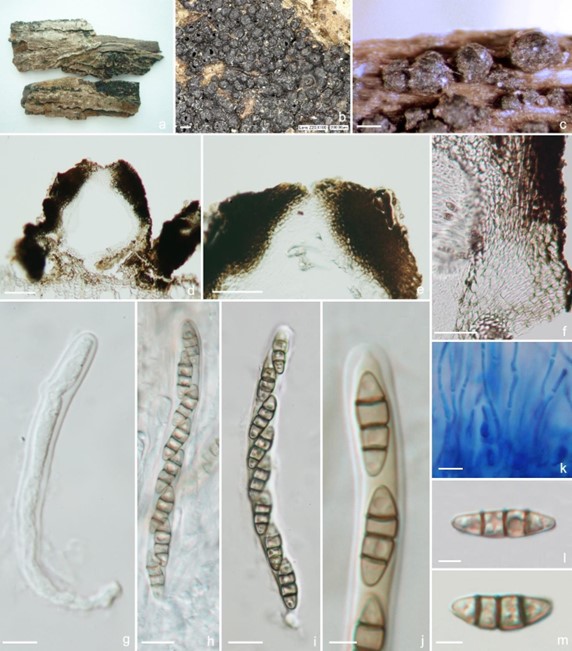Melanomma pulvis-pyrius (Pers.) Fuckel, Jb. nassau. Ver. Naturk. 23-24: 160 (1870). Fig. 108
≡ Sphaeria pulvis-pyrius Pers., Syn. meth. fung. (Göttingen) 1: 86 (1801).
MycoBank number: MB 182890; Index Fungorum number: IF 182890; Facesoffungi number: FoF 00775.
Description – see Tian et al. (2015).
Material examined – FRANCE, Ariège, Rimont, Saurine, on bark of Salix caprea L. (Salicaceae), 10 April 2008, Jacques Fournier (IFRD 2001, epitype).
Notes – Zhang et al. (2012b) examined the holotype and neotype of M. pulvis-pyrius and designate an epitype based on its similarity to the neotype. The type species of Melanomma (M. pulvis-pyrius) differs from other genera in Melanommataceae in having small, carbonaceous ascomata, hyaline or brown, 2–3-septate ascospores (Fuckel 1870, Chesters 1938). Beverwykella pulmonari has been reported as asexual morph of M. pulvis-pyrius based on phylogenetic analysis (Chesters 1938, Sivanesan 1984), however, Gruyter et al. (2013) indicated that B. pulmonaria is close to Aposphaeria corallinolutea, but is not the asexual morph of M. pulvis-pyrius. Tian et al. (2015) found that B. pulmonari represents a single clade in Pleomassariaceae but, Aposphaeria populina clustered with M. pulvis-pyrius with high support value in phylogenetic analysis.

Figure 108 – Melanomma pulvis-pyrius (IFRD 2001, epitype). a Herbarium material. b, c Ascomata on the superficial of host. d Vertical section of ascoma. e, f Vertical section through peridium. g–j Asci with ascospores. k Pseudoparaphyses. l, m Ascospores. Scale bars: b = c = 200 µm, d =100 µm, e = 50 µm, f = 20 µm, g–i = 10 µm, j–m = 5 µm.
